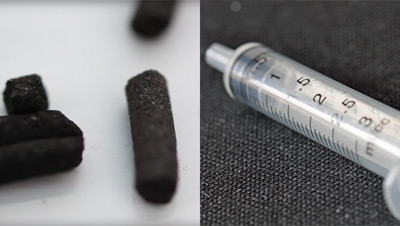 Activated carbon and carbon dosing – similar sounding, but different techniques for improving water quality. As if our hobby weren’t perplexing enough to the average beginner given all the oddball jargon we toss around, things can get doubly befuddling for novices when they come across two or more similar-sounding terms that actually apply to very different concepts. Such confusion could easily arise, for example, when newcomers are first confronted with the concepts of carbon use for chemical filtration and carbon dosing for nitrate/phosphate reduction. So, to help clarify these sound-alike terms, let’s define what they are and how each is used to maximize water quality in a marine aquarium:
Activated carbon and carbon dosing – similar sounding, but different techniques for improving water quality. As if our hobby weren’t perplexing enough to the average beginner given all the oddball jargon we toss around, things can get doubly befuddling for novices when they come across two or more similar-sounding terms that actually apply to very different concepts. Such confusion could easily arise, for example, when newcomers are first confronted with the concepts of carbon use for chemical filtration and carbon dosing for nitrate/phosphate reduction. So, to help clarify these sound-alike terms, let’s define what they are and how each is used to maximize water quality in a marine aquarium:
Chemical filtration with activated carbon
Likely, activated carbon is what comes to mind for many new hobbyists when they first hear or read about carbon use in marine aquaria, especially if they have a background in freshwater fishkeeping where activated carbon use is a long-established practice. Activated carbon (aka activated charcoal) is a highly porous medium, typically sold in granular or pelletized form, that is used to remove dissolved organic compounds (DOCs) from aquarium water. It’s considered a chemical filtration medium because the DOC molecules it removes actually form a bond with the surface of the carbon—a process known as adsorption. DOCs are what cause the yellowing of aquarium water, so their removal with activated carbon helps keep the water crystal clear. Activated carbon can also be used to eliminate various toxins and contaminants from the water, for example the noxious chemicals many corals and other sessile organisms release to prevent neighbors from encroaching on their real estate, medications used to treat fish, residual ozone exiting an ozone reactor, etc. There are various ways to place the carbon granules or pellets in a system. MORE










0 Comments